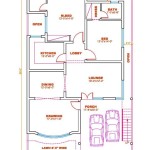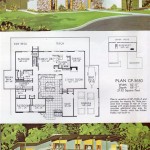How Can I Find The Original Floor Plans For My House?
Acquiring the original floor plans for a house can be an invaluable asset for homeowners. These plans provide a detailed blueprint of the property, offering insights into its original design, structural components, plumbing, electrical layouts, and any modifications made over time. Such information is crucial for renovation projects, insurance claims, historical preservation, and simply understanding the property's evolution. However, locating these plans can sometimes be challenging, requiring a methodical approach and persistent investigation across various potential sources.
The process of finding original floor plans involves navigating bureaucratic institutions, sifting through public records, and potentially engaging with professionals who specialize in historical research and architectural documentation. Success often depends on the age of the house, the location, and the diligence of previous owners in preserving relevant documentation. While there are no guarantees, understanding the common repositories and employing systematic search strategies significantly increases the likelihood of uncovering these valuable documents.
1. Local Government Archives and Building Departments
The most logical starting point in the quest for original floor plans is the local government archive or building department. These institutions are responsible for maintaining records related to construction permits, building inspections, and property assessments. When a house is initially built or undergoes significant renovations requiring permits, the architect or builder typically submits a set of floor plans to the local authorities for approval. These plans are then archived and become part of the public record.
To access these records, it is necessary to contact the relevant municipal or county office, which is usually the building department or planning department. It's important to be prepared with specific information about the property, such as the address, the year it was built (or an estimated range), and the names of any previous owners if known. This information helps the archive staff locate the correct records more efficiently. The request should be made in writing, detailing the specific information being sought and the purpose for which it is needed. Some jurisdictions may require a specific application form to be completed.
Once the request is submitted, the archive staff will search their records for the relevant floor plans. The availability of these plans can vary significantly depending on the age of the house and the record-keeping practices of the local government. Newer homes are more likely to have readily accessible digital records, while older properties might require a manual search of physical documents. If the plans are located, they may be available for viewing in person or for purchase as copies. Fees may apply for copying and handling.
In some cases, the archive may have partial plans or related documents that, while not complete floor plans, can still provide valuable information about the house's original design and construction. Building permits, for example, often include details about the dimensions of the house, the materials used, and the layout of the rooms. These documents, combined with other sources, can help to reconstruct a reasonably accurate representation of the original floor plan.
It is also important to inquire about any microfilmed records or digital databases that might contain the floor plans. Many local governments have invested in digitizing their archival materials to improve accessibility and preservation. Searching these digital resources can often be more efficient than sifting through physical documents, especially for older properties with extensive historical records.
2. Title Companies, Real Estate Agents, and Previous Owners
Title companies and real estate agents involved in past transactions related to the property are another potential source of original floor plans. During the sale of a house, various documents are typically collected and maintained, including surveys, appraisals, and sometimes even floor plans. These documents are used to assess the value of the property, determine its boundaries, and ensure that the transaction is legally sound.
Title companies, in particular, are required to maintain records of all transactions related to a property for a certain period. Contacting the title company that handled the most recent sale, or any previous sales, could yield valuable information. It is advisable to provide them with the address of the property, the names of the previous owners, and the approximate date of the transaction. They may be able to search their archives and locate any relevant floor plans or survey maps that were included in the transaction documents.
Real estate agents who have previously listed the property may also have access to floor plans or marketing materials that include a layout of the house. While these plans may not be as detailed as the original architectural drawings, they can still provide a general idea of the property's design and dimensions. Reviewing old listing brochures or online advertisements for the property could reveal valuable information. Some real estate websites also maintain archives of past listings, which can be a useful resource.
Reaching out to previous owners of the house is another potentially fruitful avenue. Previous owners may have retained copies of the original floor plans or other documents related to the property's construction or renovation. They may also have personal knowledge of the house's history and any modifications that have been made over time. Contacting previous owners can be done through online searches, social media platforms, or through the assistance of neighbors or local historical societies.
When contacting previous owners, it is important to be respectful of their privacy and to clearly explain the reason for the inquiry. Offer to compensate them for their time and effort in searching for the requested documents. Even if they do not have the original floor plans, they may be able to provide leads or insights that can help in the search.
3. Historical Societies, Architectural Firms, and University Archives
Local historical societies and architectural firms can serve as valuable resources, particularly for older or historically significant properties. These organizations often maintain archives of historical documents, architectural drawings, and photographs related to properties in their region. University archives, especially those with architecture or urban planning departments, can also hold relevant materials.
Historical societies are dedicated to preserving the history of their local communities. They often collect and maintain documents, photographs, and artifacts related to the development of local properties. Contacting the local historical society and inquiring about their holdings related to the house could yield valuable information, including floor plans, historical photographs, and even anecdotal accounts of the property's construction and evolution. These organizations often have volunteers or staff members with extensive knowledge of local history who can provide guidance and assistance in the search.
Architectural firms that specialize in historical preservation or renovation may also have access to original floor plans or other architectural drawings related to the house. If the house was designed by a well-known architect, or if it has been subject to significant renovations over the years, there is a chance that the architectural firm involved may have retained copies of the plans. Contacting local architectural firms and inquiring about their archives or records could be a worthwhile endeavor.
University archives, particularly those with strong architecture or urban planning departments, can also be a valuable resource. These archives often collect and maintain architectural drawings, photographs, and other documents related to the built environment. Searching the catalogs and databases of these archives, or contacting the archivists directly, could reveal valuable information about the house. University archives may also have collections of architectural drawings from local architects or firms that have donated their records to the university.
When contacting these organizations, it is important to be prepared with as much information as possible about the house, including its address, the year it was built, the names of any previous owners, and any known architects or builders involved in its construction or renovation. This information will help the archivists or researchers to locate the relevant materials more efficiently. It is also important to respect the rules and regulations of the archives and to follow their guidelines for accessing and handling the materials.
In addition to these primary sources, there are also online resources that can be helpful in the search for original floor plans. Websites such as Ancestry.com and Newspapers.com can provide access to historical records and newspaper articles that may contain information about the house or its construction. Online forums and social media groups dedicated to historical preservation or architecture can also be a valuable source of information and advice. By combining these online resources with the traditional search methods described above, the chances of finding the original floor plans can be significantly increased.

How To Find The Original Floor Plans For Your House

How To Get Blueprints Of Your House

Cur And Future House Floor Plans But I Could Use Your Input Addicted 2 Decorating

How To Read A Floor Plan And Design The Perfect Home For You

My House Original Floor Plan It S Nothing Like This Now Victorian Plans Vintage

How To Read A Floor Plan And Design The Perfect Home For You

Make Your Dream House Floor Plans By Architect Rehan Fiverr

House Plans The Best Floor Home Designs Abhp

This Is The Floor Plan For Double Gable Eichler My Favorite Design Homes Plans Courtyard House

House Plans The Best Floor Home Designs Abhp
Related Posts








